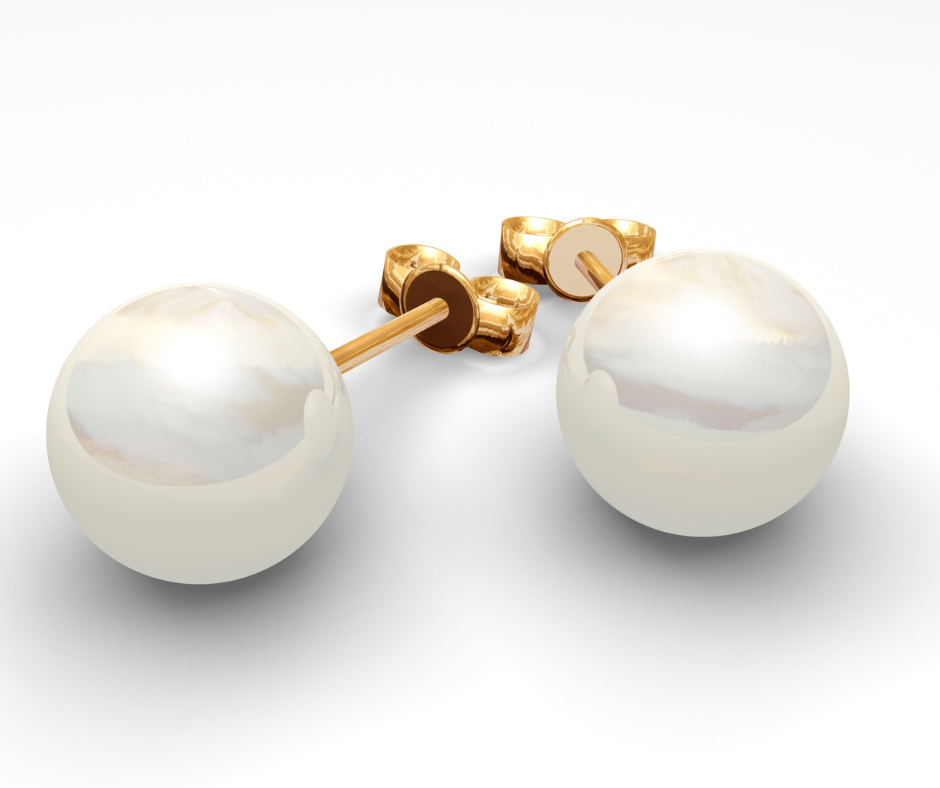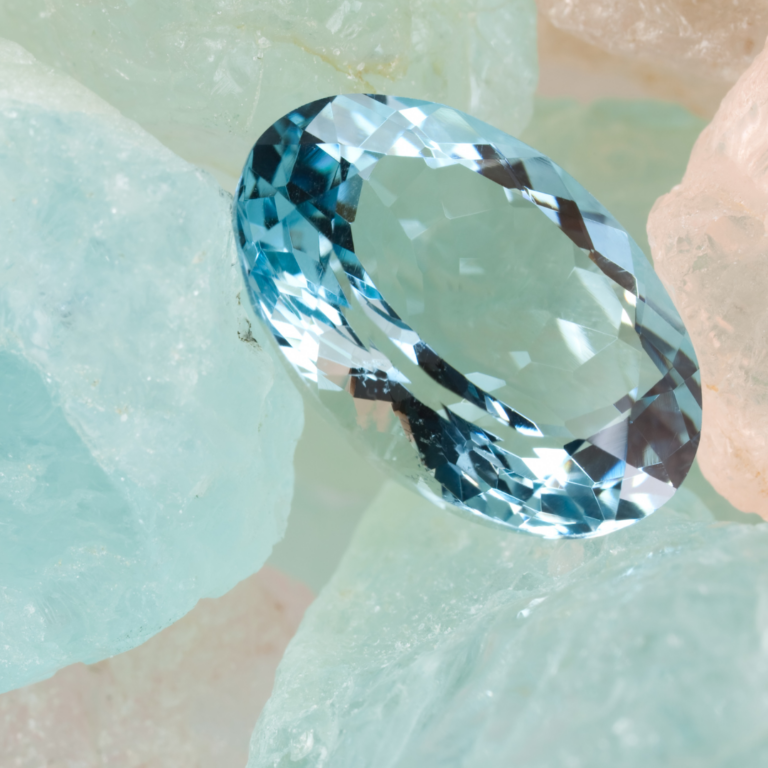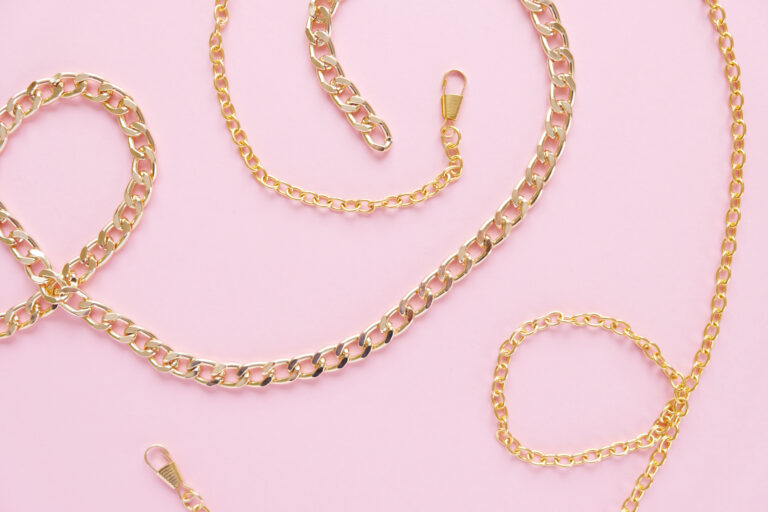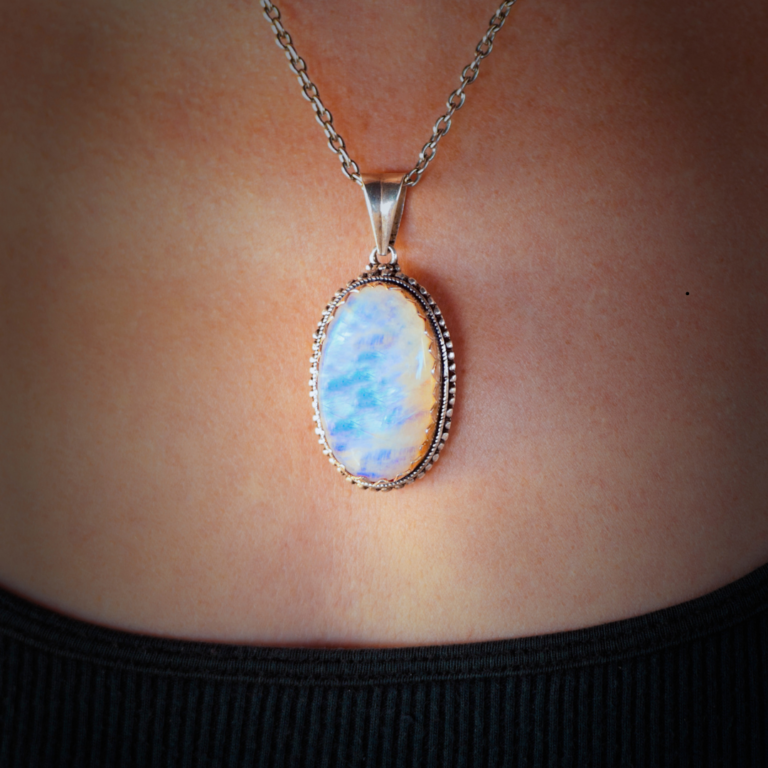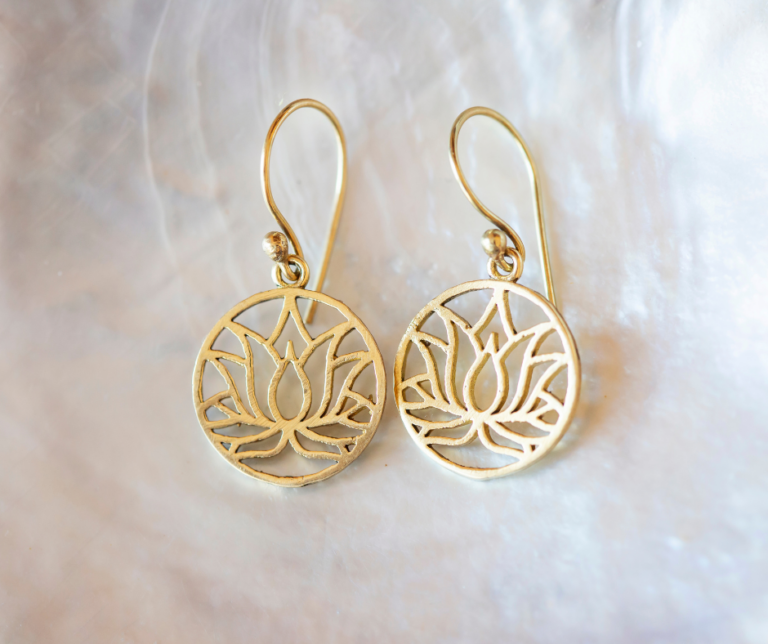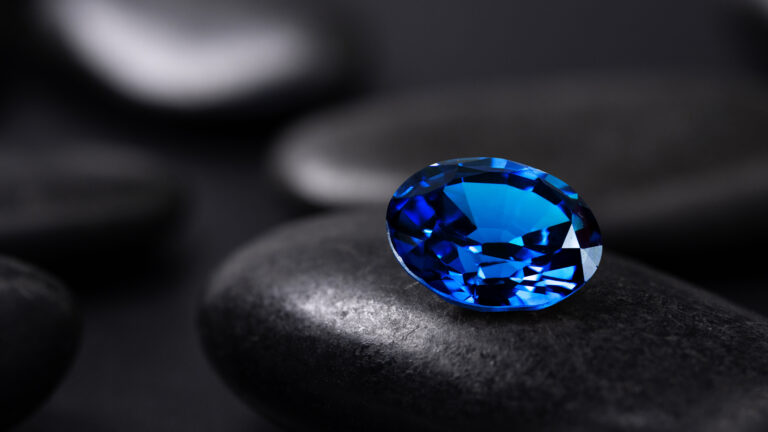2024 Wedding Trend – Pearl Jewelry
Pearl Grading Guide: Understanding Value and Quality
Pearls possess a unique place in the world of gemstones, not least because they are the only ones formed within a living creature. Unlike diamonds or rubies that miners extract from the earth’s crust, pearls are created by mollusks as a defensive response to irritants such as a grain of sand. This natural process occurs when the mollusk secretes layers of nacre, a combination of aragonite and conchiolin, around the irritant, eventually forming the lustrous orb known as a pearl.
The cultivation of pearls, which enables the production of these gems on a larger scale, has not diminished their allure. Cultured pearls are grown in farms where technicians implant a nucleus into the mollusk to kickstart the nacre secretion process. The quality of a pearl is judged based on several factors: its luster, size, shape, color, and the thickness of the nacre. These factors not only affect the gem’s beauty but also its value in the global market.
Pearls come in a variety of types, often named after their geographic origin, such as Akoya, South Sea, and Tahitian, each with distinct characteristics. Akoya pearls, generally found in Japan and China, are renowned for their superior luster and spherical shape. South Sea pearls, sourced from Australia, Indonesia, and the Philippines, are prized for their large size and creamy hues. Tahitian pearls, as the name suggests, come from French Polynesia and are unique for their dark colors and overtones. The fascination with pearls spans cultures and history, symbolizing purity and elegance, and continues to captivate people around the world.
Pearl Formation
Pearl formation is a complex biological process that occurs when an irritant becomes trapped within the mollusk. Both natural pearls and cultured pearls form through a similar mechanism, but human intervention differentiates the latter.
Natural Pearls
Natural pearls form when an irritant, such as a parasite or a piece of debris, accidentally enters a mollusk’s shell. The mollusk’s defense mechanism kicks in, leading it to secrete layers of nacre around the irritant. Over time, this nacre buildup forms a pearl. They are found in oysters, mussels, and clams in both freshwater and saltwater environments. The chances of a natural pearl forming are quite rare, estimated to be 1 in 10,000.
Cultured Pearls
Cultured pearls are created using the same natural processes as natural pearls, but with human intervention. A technician inserts a tissue graft from a donor mollusk, and often a bead or other nucleus, into the host mollusk to initiate nacre secretion. They are made in a more controlled environment, in pearl farms. The time it takes for a pearl to form can range from several months to a few years, depending on the desired size and type of pearl.
Types of Pearls
In the world of gems, pearls are unique for their organic origins. They are classified based on their source and the conditions under which they are formed.
Freshwater Pearls
Freshwater pearls originate from mussels thriving in lakes, rivers, and ponds. Unlike saltwater variants, Freshwater Pearls are generally more varied in shape and size. They may not be perfectly round and are known for their wide array of colors and lustrous appearance.
Saltwater Pearls
Saltwater Pearls are primarily cultivated in oceans and seas. These pearls are typically more spherical and boast a high luster. Saltwater pearls tend to be more expensive due to their higher luster and more rounded shapes.
Akoya Pearls
Cultivated primarily in Japan and China, Akoya Pearls are saltwater pearls known for their perfect roundness and high shine. They are traditionally white or cream in color, with overtones of pink or silver.
Tahitian Pearls
Found in the waters of French Polynesia, Tahitian Pearls are distinctive for their black color, which can range from metallic silver to the color of graphite. These pearls exhibit overtones of green, blue, or purple and are larger than Akoya pearls.
South Sea Pearls
Grown in the warm waters of the Philippines, Australia, and Indonesia, South Sea Pearls are the largest of the pearl varieties and range in color from white to gold. They have a satiny luster and a thick nacre due to the long period of cultivation.
Historical Significance
Pearls have played a pivotal role throughout history, not only as objects of beauty but also as symbols of wealth and power that impacted trade, art, and politics.
Pearls in Ancient Cultures
Ancient civilizations regarded pearls as highly precious. The Chinese documented the use of pearls as early as 2300 BC. They were often given as gifts to royalty, demonstrating their significance as status symbols. Similarly, the ancient Egyptians prized pearls so much that they were buried with them, as seen in the discovery of pearls in the sarcophagus of a Persian princess dating back to 420 BC.
Pearls in Medieval Times
During the Middle Ages, pearls symbolized purity and were predominantly worn by the nobility. European royalty often depicted in portraits with lavish pearl adornments, shows the importance of pearls in medieval society. The Catholic Church also held pearls in high esteem, using them to decorate religious artefacts.
- Sumptuary Laws: These regulations were enacted to control and restrict the wearing of pearls by the lower classes, thus maintaining a visual distinction between the elite and the common folk.
Pearls in Modern History
In the 19th and 20th centuries, pearls continued to be a centerpiece of fashion among the elites. The innovation of cultured pearls by Japanese entrepreneur Kokichi Mikimoto in 1893 revolutionized the pearl industry, making pearls more accessible.
| Period | Event | Significance |
|---|---|---|
| Early 1900s | Introduction of Cultured Pearls | Greatly expanded the pearl industry |
| 1920s | Flapper Era; Pearls symbolized wealth | Pearls became a fashion statement |
| Post-WWII | Pearls as a symbol of classic elegance | Popularized by public figures like Grace Kelly and Audrey Hepburn |
The influence of pearls spans across various cultures and times, reflecting their historical importance from ancient societies to the modern era.
Pearl Characteristics
Pearls possess distinct features that define their beauty and value. They are evaluated based on several quality factors including color, shape, size, luster, and surface quality.
Color
Pearls come in a wide array of colors, ranging from classic white to black, with shades of pink, blue, gold, and green in between. The color of a pearl is typically dictated by the species of the mollusk that produces it, as well as environmental factors such as water temperature and mineral content.
- Common Pearl Colors:
- White
- Cream
- Yellow
- Pink
- Silver
- Green
- Blue
- Black
Color can also include overtone, a translucent color that appears on top of the base color, and orient, a shimmering, rainbow-like effect.
Shape
Pearl shape varies widely, with round pearls being the most traditional and sought after. However, many other shapes are valued for their unique appeal.
- Basic Pearl Shapes:
- Round: Highly valued.
- Near-Round: Slightly asymmetrical.
- Oval: Symmetrical, elongated.
- Button: Flattened spherical.
- Drop: Pear-shaped, symmetrical.
- Baroque: Irregular, often unique.
- Circle: Ringed or ridged.
Size
Pearl size is measured in millimeters and typically ranges from 1mm seed pearls to large South Sea pearls that can exceed 20mm. Larger pearls are rarer and, as a result, more expensive.
- Pearl Size Ranges:
- Small: 1mm – 6mm
- Medium: 7mm – 14mm
- Large: 15mm and above
Pearl size contributes significantly to the gem’s value, with larger pearls generally commanding higher prices.
Luster
The luster of a pearl refers to the intensity and quality of the light reflected from its surface. High-quality pearls have sharp and bright reflections, indicating a high luster.
- Luster Grades:
- Excellent: Bright, sharp reflections.
- Good: Bright reflections but not sharp.
- Fair: Soft, diffused reflections.
- Poor: Dull, blurred reflections.
The thickness of the nacre, the substance that forms the pearl, can impact the luster, with thicker nacre usually resulting in a better luster.
Surface Quality
The surface of a pearl is rarely perfect, and surface quality refers to the presence and visibility of flaws or blemishes.
- Surface Quality Classifications:
- Clean: Virtually free of blemishes.
- Lightly Spotted: Minor blemishes.
- Moderately Spotted: Noticeable imperfections.
- Heavily Spotted: Significant flaws.
A flawless or near-flawless surface increases a pearl’s value, while noticeable blemishes decrease it.
Pearl Harvesting and Processing
Pearl harvesting and processing are meticulous procedures that ensure high-quality pearls are brought to the market. They involve specific techniques ranging from the collection of oysters to the refinement of harvested pearls.
Harvesting Methods
Manual Collection: Divers carefully hand-pick oysters from the ocean bed at depths where pearl oysters thrive. This is labor-intensive and requires skilled divers.
Cultured Pearls: Here, pearl farmers introduce an irritant into oysters to stimulate pearl formation. These oysters are raised in controlled environments and monitored until the pearls are ready to be harvested.
Processing Techniques
Cleaning: After harvesting, pearls are gently cleaned with a solution of saltwater to remove any organic material.
Sorting: Pearls are sorted by size, shape, color, and luster. This categorization is critical as it determines the value of each pearl.
Drilling: For use in jewelry, a fine hole is drilled into each pearl. Skilled technicians ensure minimal damage during this process.
Polishing: Pearls are polished to enhance their natural luster. This is usually done with a soft cloth and sometimes requires the gentle application of a compound to improve shine.
Pearl Jewelry
Pearl jewelry has remained a symbol of elegance and sophistication for centuries. It encompasses a variety of pieces such as necklaces, earrings, rings, and bracelets, each offering a unique way to showcase the luster and beauty of pearls.
Necklaces
Pearl necklaces come in several styles, including the classic strand, chokers, and pendants. The length of the necklace often determines the occasion it suits best, with shorter lengths like the 14-inch choker fitting for formal wear, and longer lengths such as the 36-inch opera necklace being more versatile. The size and quality of the pearls can greatly affect the value of the necklace.
Earrings
Pearl earrings add a subtle touch of grace to any outfit. They are found in various designs:
- Studs: Simple yet timeless, usually featuring a single pearl.
- Drops: A pearl hangs just below the earlobe, sometimes accompanied by other gemstones.
- Hoops: Pearls are set into the hoops, giving a modern twist to the classic earring style.
Rings
Rings with pearls are an understatement of refined taste. They often feature a single, large pearl as the centerpiece, but may also include:
- Diamonds or other gemstones: To accentuate the pearl.
- Settings: Include solitaire, halo, and cluster, each contributing to the ring’s overall aesthetic.
Bracelets
Pearl bracelets vary from simple strands to intricate designs, including multiple rows of pearls or pearls set alongside precious metals. They may be categorized by their clasp types:
- Lobster clasp: Offers a secure fit.
- Toggle clasp: Known for its ease of use.
Bracelets can also come with or without additional decorative elements like charms or different colored pearls to create unique patterns.
Pearl Care and Maintenance
Proper maintenance is essential for preserving the luster and quality of pearls. Follow these guidelines to ensure pearls maintain their beauty over time.
Cleaning
Gently wipe pearls with a soft, lint-free cloth after each wear. This action removes body oils and perfume that can damage the pearl surface. For a deeper clean, dampen the cloth with water and a drop of mild detergent, then carefully pass it over each pearl.
Storage
Always store pearls separately from other jewelry in a fabric-lined compartment or pouch to prevent scratches. Keep them away from extreme temperatures, direct sunlight, and dry conditions, as these can cause pearls to dry out and crack.
| Environment | Recommendations |
|---|---|
| Humidity | Use silica gel packets in the storage area. |
| Temperature | Avoid high temperatures and sudden changes. |
Wearing
Pearls should be the last thing one puts on and the first to take off. This practice minimizes exposure to cosmetics, hair spray, and perfume, which can deteriorate the nacre coating.
Restringing
If pearls are strung, have them professionally restrung once a year if worn frequently. The string should be knotted between each pearl to prevent loss if the string breaks.
Avoid Chemicals
Never expose pearls to chlorinated water, vinegar, or other harsh chemicals. These substances can cause irreparable damage to the pearl surface.
Through careful attention to these care aspects, one can ensure that pearls remain a timeless adornment for generations.
Pearl Grading Systems
Pearl quality is evaluated using several grading systems, the most prominent being the AAA-A system, the Tahitian system, and the A-D system (also known as the Tahitian system outside of French Polynesia). Grading is based on several factors, including luster, surface quality, shape, color, and size.
AAA-A System Often used for freshwater and akoya pearls, grading ranges from AAA to A:
- AAA: Exceptional luster and only minor surface imperfections over less than 10% of its surface.
- AA: High luster and surface imperfections over less than 30%.
- A: Lower luster with surface imperfections over more than 60% or a heavily blemished surface quality.
Tahitian System The Tahitian system, employed primarily for black pearls, categorizes pearls into four grades:
- A: Top grade; excellent luster with only one or two minor imperfections.
- B: Good luster with some surface defects over no more than 30% of the pearl’s surface.
- C: Medium luster with surface defects over up to 60%.
- D: Many defects or low luster; usually not used in fine jewelry.
A-D System (Tahitian Outside French Polynesia) Similar to the Tahitian system, this is applied generally to all pearl types in many regions:
| Grade | Luster | Surface Quality |
|---|---|---|
| A | High | Minor imperfections |
| B | Medium | Some defects |
| C | Fair | Noticeable defects |
| D | Poor | Considerable defects |
These systems provide a standardized way to assess the quality of pearls, aiding customers in making informed purchasing decisions.
Imitations and Simulants
Pearls have captivated people for centuries, leading to the creation of various imitations and simulants. The market offers several alternatives to natural pearls.
Glass Pearls: These are made by dipping glass beads into a solution containing fish scales to mimic the pearl’s luster. They’re easily identified by their overly uniform size and shine.
Plastic Pearls: Usually the least expensive, they are lightweight and can be mass-produced. Their surface may appear less lustrous and more chalky compared to real pearls.
Shell Pearls: Created from the interior lining of mollusk shells, known as mother-of-pearl. These beads closely resemble the appearance of natural pearls and hold up well over time.
Swarovski Pearls: High-quality crystal cores coated with a pearl-like finish. They have a consistent size and color but lack the unique overtones of natural pearls.
Majorica Pearls: Manufactured from glass beads with a special coating that imitates a pearl’s luster. They are known for their durability and high-quality sheen.
Below is a comparison of simulants’ features:
| Simulant | Base Material | Features |
|---|---|---|
| Glass Pearls | Glass | Uniform size, fish scale coat |
| Plastic Pearls | Plastic | Lightweight, less lustrous |
| Shell Pearls | Mother-of-pearl | Resemble real pearls, durable |
| Swarovski | Crystal | Consistent size, pearl finish |
| Majorica | Glass | High-quality luster, durable |
Identifying these imitations requires careful attention to their individual characteristics. Skilled experts can distinguish them from natural pearls through various tests, including weight, temperature, and luster examinations.
Market and Economics
The global market for pearls is characterized by established trading hubs and pricing influenced by several key factors. Understanding these elements helps shed light on the economic dynamics of the pearl industry.
Trading Hubs
Asia serves as a pivotal region for pearl trading, with Hong Kong, Japan, and specific areas in China leading as the primary hubs. These centers are renowned for their large-scale pearl exchanges and auctions, which draw international buyers and sellers:
- Hong Kong: A gateway for pearl trade, particularly for wholesale transactions.
- Japan: Renowned for its cultivation of high-quality Akoya pearls and functions as a major player in the international pearl market.
- China: Known for freshwater pearl production and distribution, China has a robust domestic market that contributes significantly to global trade.
Pricing Factors
Pearl pricing is determined by several factors that contribute to the value assessment:
- Origin: The source of pearls plays a significant role, with South Sea and Tahitian pearls typically commanding higher prices due to their rarity and size.
- Size: Generally, larger pearls fetch higher prices, with size measured in millimeters.
- Shape: Round pearls are most sought after and attract premium pricing. Other shapes like baroque are usually less expensive.
- Color: Natural, vibrant colors are more desirable, leading to higher values. Pearls with unusual overtones can be particularly valuable.
- Luster: Pearls with high luster, indicating a mirror-like surface, are priced higher due to their aesthetic appeal.
- Surface Quality: Flawless or near-flawless surfaces increase a pearl’s value, as blemishes can significantly diminish worth.
The complexity of these factors manifests in a pearl’s final market price, reflecting the interplay between rarity, beauty, and consumer demand.
Cultural and Symbolic Meanings
Pearls have been esteemed for their beauty and rarity for centuries, holding significant cultural and symbolic meanings across different societies.
In Ancient Societies:
- Greeks: Associated pearls with love and marriage, considering them a symbol of harmony.
- Chinese: Revered as a symbol of wealth, wisdom, and dignity.
- Romans: Regarded as the ultimate status symbol, indicative of prestige and wealth.
In Modern Culture:
- Pearls often signify purity, innocence, and integrity.
- They are traditionally given as a gift on the 30th wedding anniversary.
- In fashion, pearls embody elegance and simplicity.
Religious Context:
- Christianity: Pearls represent purity and were often depicted in religious art featuring the Virgin Mary.
- Hinduism: Pearls are associated with the god Vishnu and are considered to bring good fortune and spiritual guidance.
Pearls in Literature:
- Frequently featured in literary works to symbolize beauty, chastity, and modesty.
| Culture | Symbolic Meaning |
|---|---|
| Greek | Love, marriage |
| Chinese | Wealth, wisdom |
| Roman | Prestige, wealth |
| Modern | Purity, innocence, elegance |
| Religious | Purity (Christianity), Fortune (Hinduism) |
These gems maintain their status as a cherished adornment and potent emblem of various laudable qualities, cherished by cultures worldwide. Their timeless appeal ensures that pearls continue to hold a special place in the fabric of cultural and symbolic tradition.
Environmental and Ethical Considerations
The cultivation and harvesting of pearls can have significant environmental impacts. Cultured pearl farms, for example, need pristine water conditions to produce high-quality pearls. They can provide an incentive to maintain the health of marine ecosystems. However, if not managed responsibly, they can also lead to ecosystem damage such as:
- Overharvesting of oysters or mussels
- Pollution from farm runoff
- Alteration of local ecosystems
The ethical considerations of pearl farming are often connected to the treatment of workers and the sourcing of the mollusks. Ethical farms ensure:
- Fair wages and safe working conditions for their workers
- Sustainable sourcing of mollusks
- Humane treatment of the marine life involved
| Sustainable Practices | Description |
|---|---|
| Biodiversity Preservation | Farms operate without disrupting local species. |
| Economic Support | Local communities benefit from pearl farming activities. |
| Low-Impact Farming | Methods used do not adversely affect water quality. |
To ensure ethical consumption, consumers can look for pearls certified by organizations that monitor environmental and social standards within the industry. This includes The Marine Stewardship Council (MSC) or Fair Tradecertifications. It is essential to support pearl producers that are transparent about their farming practices and are committed to minimizing their environmental footprint while upholding ethical standards for their workforce.

